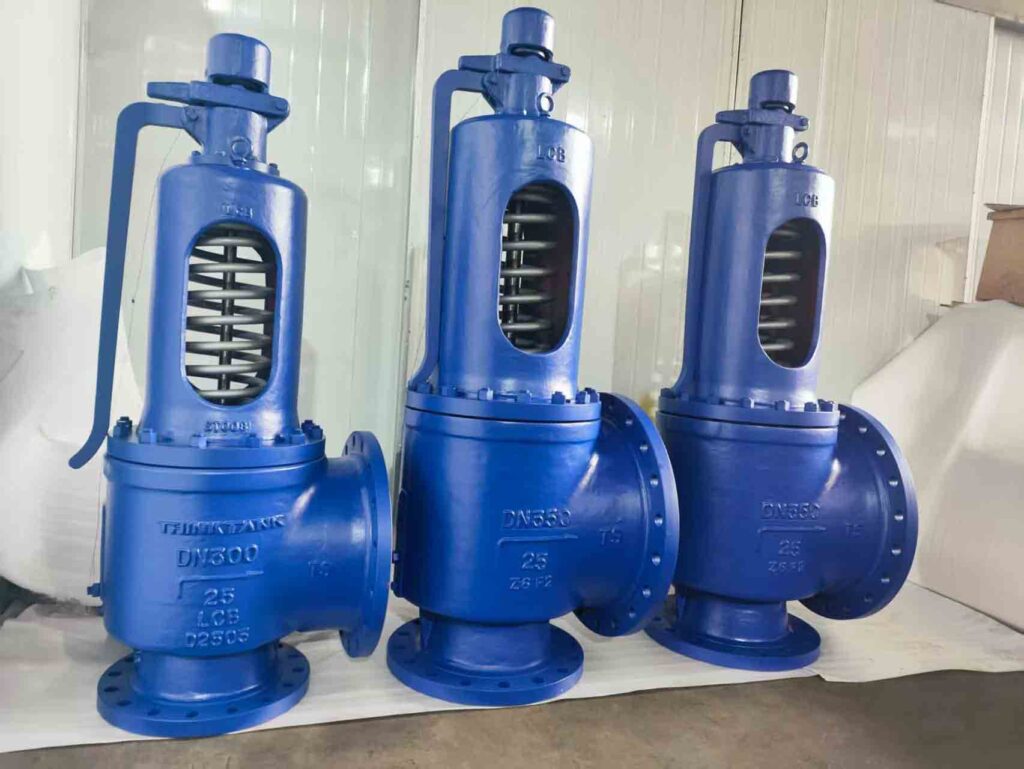As an engineer at THINKTANK, I’ve worked with customers from over 56 countries, each with their own set of compliance rules for pressure relief equipment. Safety valves, being the final protective element in pressurized systems, must comply with local standards before installation and use. This article provides a detailed, engineer-friendly summary of global certification requirements for safety valves as of 2025, helping procurement managers, EPCs, and plant designers avoid delays in project approvals.

Why Safety Valve Certifications Matter
Safety valves protect both personnel and equipment. If the valve fails or is rejected by inspection authorities, the project can be delayed or shut down. That’s why knowing and planning for certification at the quotation or design stage is essential.
International Safety Valve Certifications (2025 Overview)
🇪🇺 European Union — PED + CE Marking
- Standard: Pressure Equipment Directive 2014/68/EU
- Scope: All devices with pressure > 0.5 bar
- Required: Notified Body conformity assessment (e.g., TÜV, DNV)
- Remarks: THINKTANK valves are CE-marked and tested according to Module B + D. CE alone is not enough — PED conformity is the legal requirement.
🇺🇸 United States — ASME + National Board (NB) Mark
- Standard: ASME Boiler & Pressure Vessel Code Section I / VIII
- Scope: Power boilers, pressure vessels, chemical systems
- Required: ASME V or UV stamp + NB registration
- Remarks: ASME valves must be witnessed and approved by an Authorized Inspector. THINKTANK supports ASME/NB compliance for global customers.
🇯🇵 Japan — KHK (High Pressure Gas Safety Act)
- Authority: High Pressure Gas Safety Institute of Japan (KHK)
- Certification Methods:
- Type Approval (Daijin-Nintei) — for standard models
- Individual Certification (Project-Based) — for custom or limited-quantity valves
- Remarks: KHK requires detailed documentation, test reports, and in some cases, in-country testing. Projects in Japan involving compressed gases often mandate this.
🇮🇳 India — IBR (Indian Boiler Regulation)
- Scope: Boiler valves and pressure accessories
- Certification: Form IIIA (standard valves) or Form IIIC (site testing)
- Process: Inspection and stamping must be done by a certified Indian IBR inspector
- Remarks: THINKTANK has experience coordinating IBR approvals in cooperation with Indian EPCs and authorized inspectors.
🇷🇺 Russia / EAEU — EAC TR CU 032/2013
- Scope: Russia, Kazakhstan, Belarus (EAEU countries)
- Standard: Technical Regulation for Safety of Pressure Equipment
- Certificate: EAC Declaration or EAC Certificate
- Remarks: Customers must submit technical documents in Russian, including drawings, specifications, and manuals. THINKTANK works with SGS and other authorized bodies for EAC approvals.
🇧🇷 Brazil — NR-13 Compliance
- Standard: Norma Regulamentadora 13 (NR-13)
- Scope: Steam boilers, pressure vessels
- Remarks: Brazil does not have a single certifying body, but all safety valves must comply with NR-13, and local inspectors may require documentation in Portuguese. THINKTANK supports compliance statements and third-party test reports on request.
🇨🇳 China — TS License + GB Standards
- Standard: GB/T 12241, GB/T 12243, TSG D7002
- License: TS Certification for Pressure Pipe Components
- Remarks: Valves for pressure systems used in China must be manufactured in licensed facilities. THINKTANK is fully certified under TS and has completed many domestic power and chemical projects.
Certification Summary Table
| Region/Country | Certification / Standard | Full Name / Issuing Body | Applicable Scope / Notes |
| EU (European Union) | PED 2014/68/EU | Pressure Equipment Directive | Required for all pressure equipment >0.5 bar. CE marking must be accompanied by conformity from a Notified Body such as TÜV or Lloyd’s. |
| CE | Conformité Européenne | Indicates compliance with essential EU safety requirements; must be used together with PED and EN standards. | |
| Germany | AD2000 Merkblatt A2 | Arbeitsgemeinschaft Druckbehälter | Commonly used in boiler and pressure vessel systems. Requires TÜV review and documentation. |
| TÜV Type Approval | TÜV SÜD / TÜV Rheinland | Typically required for domestic projects or German customers. | |
| USA | ASME Sec I / Sec VIII | American Society of Mechanical Engineers | Section I for boilers, Section VIII for pressure vessels. |
| NB Mark | National Board | Registered safety valves with ASME must be approved and listed by the NB (National Board). | |
| Japan | KHK High Pressure Gas Safety Act | The High Pressure Gas Safety Act | High-pressure gas equipment requires individual testing (KHK Individual Test) or approval under a Ministerial Certified Model. |
| South Korea | KGS Standard (Korea Gas Safety Corp.) | Korea Gas Safety Corporation | Mandatory for LNG and petrochemical projects; strong regulatory enforcement. |
| China | TS Certification | Special Equipment License (Pressure Piping Components) | Safety valves are considered pressure vessel accessories and must be manufactured and sold with a valid TS license. |
| GB/T 12241, GB/T 12243 | National Standards | Specifies technical requirements and performance testing for safety valves. | |
| India | IBR Certification | Indian Boiler Regulation | Required for boiler systems. Certification must be issued by authorized or visiting Indian inspectors. |
| Brazil | NR-13 Standard | Brazilian Boiler and Pressure Vessel Norm | All steam boilers and pressure vessels must be equipped with safety valves compliant with NR-13. |
| Russia | EAC TR CU 032/2013 | Eurasian Conformity | Applies to EAEU member states, including Belarus, Kazakhstan, etc. Requires EAC Declaration of Conformity. |
| Middle East | SABIC / ADNOC Vendor List | Major Project Owner Standards | ASME, PED certificates and reference project experience are typically required. |
| Saudi Arabia | SASO & IECEx/ATEX | Saudi Standards | IECEx or ATEX certification is required for applications in explosive atmospheres. |
| Mexico | NOM-093-SCFI-2020 | Normas Oficiales Mexicanas | Applicable national standard for pressure safety accessories (for reference). |
THINKTANK’s Global Certification Support
We help our customers meet international compliance in the following ways:
- PED, ASME, TS certified manufacturing facilities
- Assistance with KHK, IBR, and EAC project certification
- Multilingual documentation (English, Russian, Portuguese, Arabic)
- Third-party inspection and FAT support
- Flexible customization for label, tag, and material traceability
Pro Tip: Plan Certifications Early
Let us know your target country and application during the inquiry stage. This allows us to:
- Select the correct valve series
- Estimate certification time
- Prevent project delays or inspection failures
Need Help with a Project?
Reach out to our engineering team for technical documents, datasheets, or certification guidance.
👉 Contact Us
📧 Email: [email protected]





